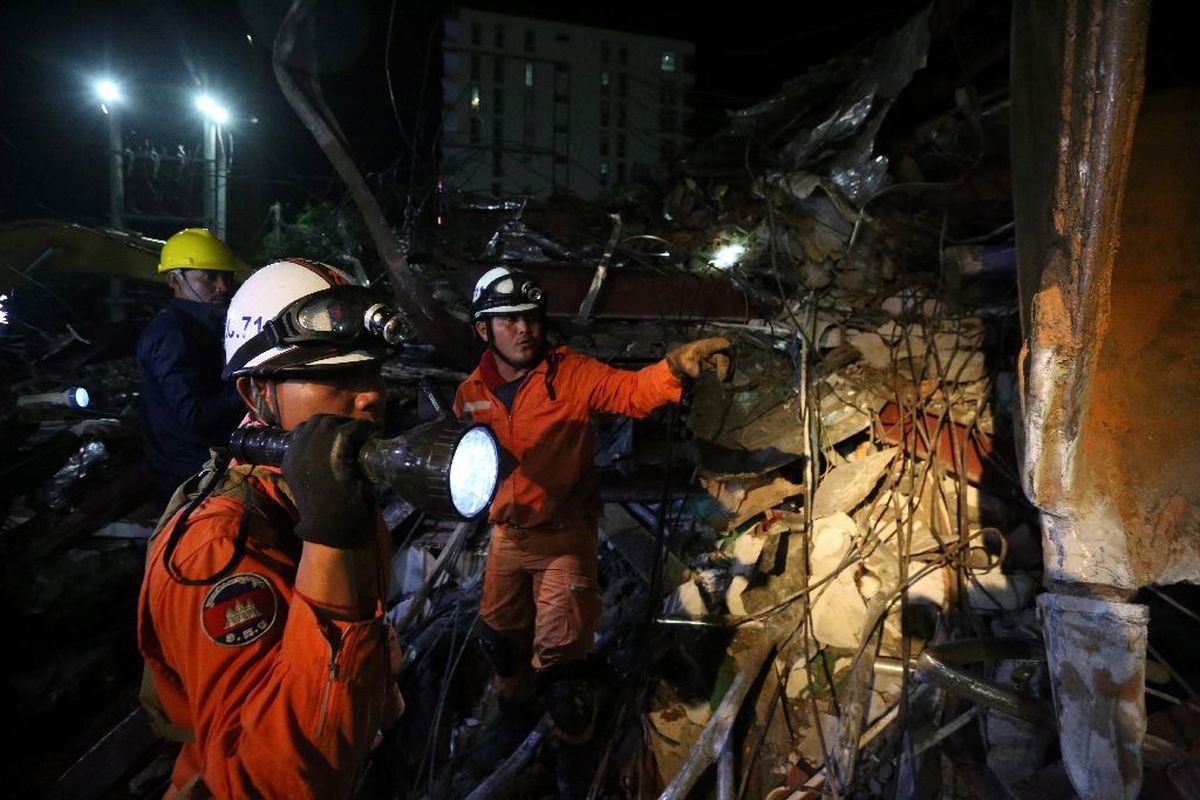Rescue workers on Sunday picked through the rubble of a collapsed Chinese-owned building in a Cambodian beach town in a desperate search for survivors after the construction site accident killed at least 17 people.
One person was pulled alive from the flattened seven-storey building late Saturday, more than 12 hours after it collapsed in the beach resort of Sihanoukville.
Advertisement
By Sunday morning rescuers had scoured barely half of the debris of twisted metal, glass and large concrete slabs.
The once sleepy fishing village has seen a Chinese construction boom buoyed by tourists to its dozens of casinos in recent years, with questions raised on the speed of development in a nation notorious for lax safety standards.
Three Chinese nationals and a Cambodian landowner have been held for questioning over the building collapse, which Cambodian Prime Minister Hun Sen blamed on “carelessness” by the construction company.
At least 1,000 rescue workers, soldiers, police, medics and Chinese construction experts have been deployed to the site.
Some wore hard hats and oxygen tanks as they searched alongside several construction diggers, while the relatives of the injured waited at nearby hospitals for news.
Rescuers pulled several bodies from the rubble late Saturday, shooting the death toll up to 17, with 24 injured.
A provincial official said “teams have searched about 40 per cent of the debris”, prompting concerns the toll will rise.
“We fear more bodies are trapped in the debris because the search has not reached the bottom of the building yet,” the official told AFP, requesting anonymity.
It is not clear how many people were at the site at the time of the collapse, but a local official said earlier there would normally have been about 50 workers on the building site at the time.
– ‘Carelessness’ –
The southwestern town of Sihanoukville is awash with Chinese investment that has sparked a building frenzy to cater to mainland tourists flooding the town’s city’s casinos, beaches and glitzy hotels.
Beijing is pouring investment into Cambodia as part of its behemoth Belt and Road initiative, a sweeping trillion-dollar infrastructure programme across Asia, Africa and Europe.











